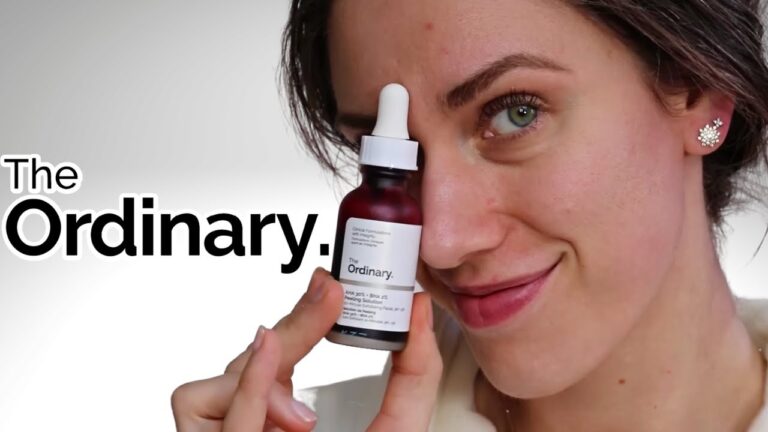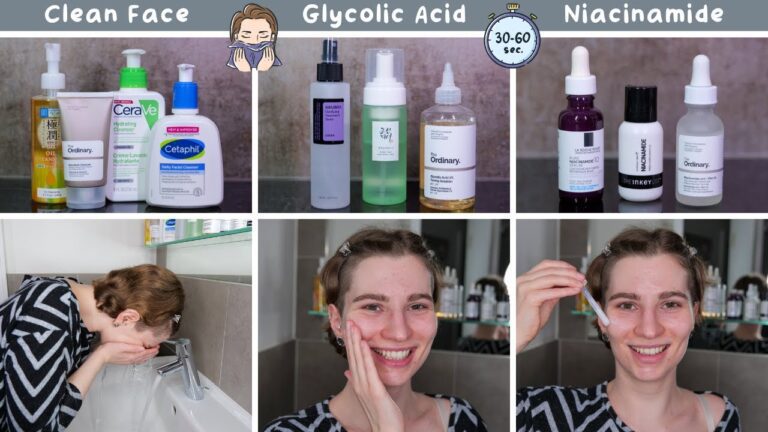Unlock the Secret to Radiant Skin with Chemical Exfoliation – A Complete Guide
As people become more aware of their skin’s needs, they are discovering the many benefits of chemical exfoliation. This type of exfoliation utilizes acids, enzymes, and other chemicals to remove dead skin cells and stimulate cell turnover, resulting in smoother, more radiant skin. Whether you’re dealing with hyperpigmentation, acne, or simply want to improve your overall complexion, chemical exfoliation may be just what you need.
The Basics of Chemical Exfoliation
Chemical exfoliation is different from physical exfoliation, which involves using scrubs, brushes, or other tools to manually remove dead skin cells. Instead, chemical exfoliants penetrate the skin’s surface and break down the bonds holding dead skin cells in place. This process allows the dead skin cells to slough off naturally, revealing brighter, smoother skin underneath.
The Benefits of Chemical Exfoliation
Chemical exfoliation offers numerous benefits for all skin types:
- Improved skin texture: By removing dead skin cells, chemical exfoliation helps to smooth rough, uneven skin texture.
- Reduced hyperpigmentation: Chemical exfoliants can help fade dark spots and other forms of hyperpigmentation by speeding up the skin’s natural exfoliation process.
- Decreased acne: Chemical exfoliation can help unclog pores and prevent acne breakouts.
- Reduced appearance of fine lines and wrinkles: By stimulating cell turnover, chemical exfoliation can help plump up the skin and diminish the appearance of fine lines and wrinkles.
Types of Chemical Exfoliants
There are several types of chemical exfoliants to choose from, each with its own unique benefits:
- Glycolic acid: Derived from sugarcane, glycolic acid is an alpha-hydroxy acid (AHA) that helps to exfoliate the skin and improve its texture. It can also stimulate collagen production, making it a great choice for anti-aging.
- Salicylic acid: A beta-hydroxy acid (BHA), salicylic acid is oil-soluble, making it an excellent choice for acne-prone skin. It can help unclog pores and reduce inflammation.
- Lactic acid: Another AHA, lactic acid is gentle on the skin and can help to brighten and hydrate. It’s a good choice for those with sensitive skin.
- Enzymes: Enzymes such as papain (from papayas) or bromelain (from pineapple) are natural exfoliants that help to dissolve dead skin cells. They are a good choice for those who want a gentler exfoliation.
How to Incorporate Chemical Exfoliation into Your Routine
It’s important to begin slowly when incorporating chemical exfoliants into your skincare routine. Start by using the product once or twice a week, and gradually increase frequency as your skin becomes more accustomed to it. Be sure to follow the instructions carefully, as over-exfoliation can lead to irritation and other problems.
When using a chemical exfoliant, it’s important to follow up with a hydrating serum or moisturizer, as these products can help to soothe and hydrate the skin after exfoliation.
Overall, chemical exfoliation can be an excellent addition to any skincare routine. By choosing the right exfoliant for your skin type and using it appropriately, you can enjoy smoother, brighter, and healthier-looking skin!
Contents
Most searched products:
Does Sephora Support Israel? Answering Your Questions
 The Ultimate Guide to Azealic Acid: Benefits, Uses, and Side Effects
The Ultimate Guide to Azealic Acid: Benefits, Uses, and Side Effects How Long Does Glycolic Acid Take to Show Results: Your Ultimate Guide
Discover the Benefits of The Ordinary Botox for Your Skin
 The Ultimate Reviews of The Ordinary Peeling Solution
The Ultimate Reviews of The Ordinary Peeling Solution  The Ultimate Guide to The Ordinary Colours Foundation: Reviews, Swatches, and Tips
The Ultimate Guide to The Ordinary Colours Foundation: Reviews, Swatches, and Tips The Perfect Order: When to Use Retinol and Niacinamide in Your Skincare Routine
 Unlock the Power of Hyaluronic: Benefits, Uses, and Top Products
Unlock the Power of Hyaluronic: Benefits, Uses, and Top Products Say Goodbye to B.O with Glycolic Acid Deodorant: The Secret to Long-Lasting Freshness
 Unlock Smooth and Supple Skin: Discover the Best Skincare Products for Skin Suppleness
Unlock Smooth and Supple Skin: Discover the Best Skincare Products for Skin Suppleness












